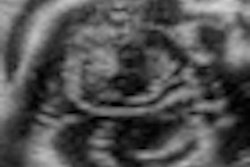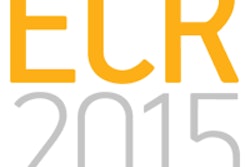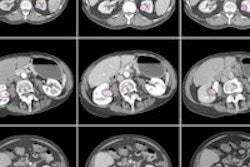
When developing new imaging systems, OEMs can choose from many types of computer hardware platforms. Platform selection in turn affects the type of image processing to be used, which then influences the radiologist's work when viewing medical images. So what should vendors consider when evaluating different hardware platforms for their imaging modalities?
It's no surprise that there are many different types of hardware platforms with a variety of characteristics to choose from in the image processing market today. But because medical imaging modalities come in a wide variety of shapes and sizes, there are several factors to consider when a vendor chooses which type will be best for its product.
From multiton, multikilowatt MRI scanners to battery-powered handheld ultrasound units, all modalities require processing of original data to create diagnostically useful images. Additionally, the speed of the image processing must be compatible with the workflow around the modality.
For standard x-ray imaging, a few seconds of processing time per image may be an accepted industry standard, but fluoroscopy requires real-time video performance, meaning that the processing of individual images (frames) must be performed within tens of milliseconds. Latency should also be kept small, typically within one to three frames.
Fluoroscopy also puts a strong emphasis on patient safety. The imaging path to the surgeon has to be close to fail-proof. In the case of failure, image flow must be restored within seconds.
When selecting the best hardware platform for image processing, it's critical to consider design restrictions (power consumption, size) along with other requirements.
So, where should a vendor start? In the remainder of this article, we present five options to consider when designing the best platform for an imaging system.
Application-specific integrated circuits (ASICs)
ASICs have been used successfully to build highly dense systems manufactured in large volumes.
They are special chips in which the desired program has been "burned" into the silicon. This process completes the chip's composition, and program changes will require the ASIC to be re-engineered. Because the manufacturing process is essentially equivalent to the one used for processors, ASICs can be clocked at high frequencies, making them good candidates for extreme performance and optimal efficiency. They may be good for a handheld scanner that is simple and produced in large volumes. As soon as power has stabilized, the application is ready to run.
Keep in mind that this option comes with very high initial costs for design, thus requiring large volumes to get acceptable cost. Once produced, the ASIC cannot be changed to include bug fixes or new features.
Field-programmable gate arrays (FPGAs)
FPGAs work well with prototypes and systems deployed in smaller quantities. They offer a high processing density and greater flexibility than ASICs.
Instead of implementing the exact desired program on a chip, as is done with ASICs, FPGAs are built from a large number of elementary components placed on a dense programmable interconnect grid. Unique from other hardware options, the usage of the pins can be decided at any time, which makes FPGAs adaptable devices for interfacing arbitrary peripherals. If properly optimized, FPGAs can provide a strong performance-to-cost ratio. They can also be loaded and ready to execute within a few milliseconds.
However, skilled engineers and sophisticated and expensive tools are required to build an efficient implementation of the application.
Digital signal processors (DSPs)
DSPs, traditionally designed for telecommunications, are frequently used in medical systems mainly because of their low power requirements, performance, and system-on-chip approach. The internal architecture of their cores is rather simple, so performance optimization largely relies on the skills of the compilers and engineers working with the processor.
DSPs can have impressive price-to-performance ratios if managed properly. Their major strength is their architecture. DSPs can hold most common peripherals directly on the chip, such as Ethernet, PCI Express (PCIe), and USB. DSPs can also easily interface simple devices such as memory without additional "glue." The design of DSP-based motherboards can be extremely simple and cheap. They also use lightweight, real-time operating systems that allow them to be operational within a few milliseconds.
Modern general-purpose processors (GPPs)
GPPs are high-performing, versatile platforms, which makes them very attractive for implementing medical applications.
GPPs are the most versatile of the hardware platform options, and they can be utilized in a large variety of tasks, ranging from gaming to scientific computing. Modern GPPs are usually built around multicore architectures, with each core holding multiple highly efficient and functional units. To keep those functional units as busy as possible, GPPs also include acceleration hardware such as large caches, dynamic instruction scheduling, and sophisticated branch prediction units. These mechanisms make GPPs less sensitive to the level of optimization of the programs, which usually decreases the engineering effort needed to achieve high performance levels.
GPPs are usually powered by modern operating systems that take several seconds to initialize before they are capable of launching an application. Because they are general purpose, GPPs have worse performance per watt compared to other options. This makes them less suitable where low power and very high performance is required.
Graphics processing units (GPUs)
GPUs efficiently process images, complementing their position as a reliable and useful product in the medical imaging market.
GPUs are built around a large number of elementary processors and an extremely fast memory hierarchy. Each processor works independently on a subset of the total data to be processed (such as an image). In recent years, GPUs have become frequently used for a variety of general computational tasks such as general-purpose image processing. GPUs are likely the best choice for peak performance among the more easily programmable devices.
GPUs are relatively power-hungry and expensive, and they are not as easy to develop software for compared to a GPP. But while a GPU may be a bad choice for a handheld device, it's a good choice for a workstation. The vast majority of GPUs require the presence of a host to configure them and manage the executables necessary to run the application.
Choose the right combination
The many parameters vary in multiple magnitudes between the different hardware platforms and whether you're working with a handheld device or a gold-standard workstation. Furthermore, even if their theoretical performances are similar, their architecture may be more or less well-suited for handling part of the processing pipeline.
Using one single acceleration device type may lead to compromises that jeopardize the image quality and/or the performance. It is thus very important for modality developers to choose the right combination of hardware platforms.
Daniel Hägg and Emil Styrke are software architects with image enhancement software developer ContextVision.
The comments and observations expressed herein do not necessarily reflect the opinions of AuntMinnie.com.


















